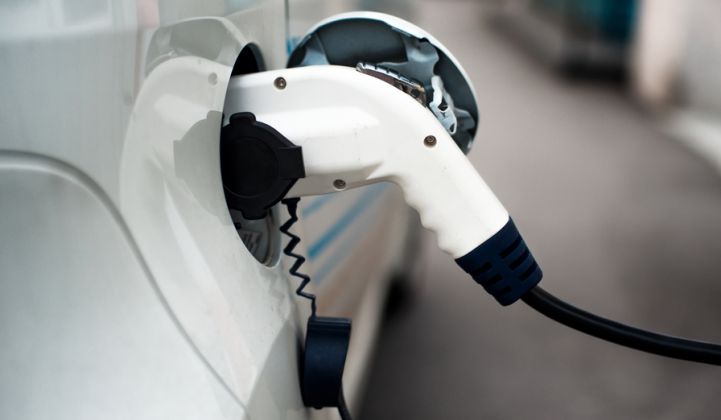Recent reports suggest that electric-vehicle users are frustrated by the disproportionate car-to-charging-station ratio.
With one charging station for every 10 electric vehicles, electric-vehicle (EV) drivers are often trapped in vicious competition, vying for the highly coveted spaces. Nowhere is the competitive tension felt more intensely than in company lots, where EV drivers often remain parked much longer than needed to fully charge, or worse, where gas-powered car drivers accidentally take the precious plug-in spots.
With more and more drivers investing in electric vehicles, the problem will only intensify. Global sales of electric vehicles are forecasted to hit 430,000 by close of 2015 -- marking a 40 percent increase from last year, and an astounding 856 percent increase since 2011.
To accommodate the booming market and EV-driving employees, many companies are considering adding more charging stations to their lots. While this may sound like a hassle, it’s truly imperative in today’s increasingly energy-conscious world, and it entails an easier transition that many might expect.
Companies are strongly encouraged by the government to implement more EV-charging stations. Companies that offer chargers allow EV owners to double their vehicles’ all-electric daily commuting range. President Obama’s EV Everywhere Grand Challenge aims to make this a reality by encouraging employers to provide plug-in EV (PEV) charging access at their worksites. Should the challenge be successful, the number of American employers offering workplace charging could increase by tenfold in the next five years.
Participating companies will not only enhance their corporate sustainability efforts, contribute to a building’s LEED Certification, and reduce emissions from employee commutes, but they can also leverage EV-charging stations to recruit and retain top talent. EV-charging stations may signal to prospective employees a company’s innovation and dedication to employees, thereby attracting a wider pool of candidates.
Over time, it seems that EV-charging stations are on an inevitable rise, but in the short term, businesses may be still be hesitant about associated costs. What may come as a surprise is that charging-station implementation will hardly make a dent in most companies’ overall energy spend.
Based on analysis of utility meter data, FirstFuel recently found that the cost to maintain 10 electric-vehicle charging stations per year accounts for less than 4 percent of an average 100,000-square-foot commercial office building’s annual energy bill. The cost is so nominal that it does not even stand out when looking at a company’s energy bill.
For those worried about the less than 4 percent increase in energy costs, they should also consider that the same average office building in the FirstFuel database is already wasting about twice that amount based on poor operations.
A few low-cost lighting controls and tighter building HVAC start-stop times and set-point controls added to the EV charger setup expense could turn this investment into both a crowd-pleaser and a net financial gain in a matter of months.
Investing in EV-charging stations offers businesses a host of benefits -- chiefly, happier EV-driving employees and enhanced sustainability profiles. Even better, these benefits can come at a nominal cost, often making the decision to invest a no-brainer.
***
Indran Ratnathicam is the vice president of marketing and strategy at FirstFuel.



